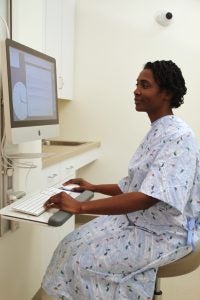Questions About SP Assessment
What is an SP?
A standardized patient (SP) is someone who has been carefully trained to portray a simulated case based upon an actual patient’s physical findings, personal and medical history, symptoms and personality characteristics. The standardized patient allows the medical student the opportunity to practice both clinical examination and interviewing skills in a safe and non-threatening environment.
Why are SPs used instead of real patients?
Standardized patients have several advantages over the use of real patients. As mentioned above, SPs can be trained to consistently reproduce the history, emotional tone, communicative style and physical signs of an actual patient without placing stress upon a real patient. Some additional advantages are standardization of patient problems, availability and cost efficiency.
SPs provide faculty with a standard assessment format. In other words, students are assessed interacting with the same patient portraying the same history, physical signs, etc.
Availability – SPs can be available at any time during the day and for extended periods of time.
Cost-Efficiency – SPs can be trained to record student performance accurately and consistently, alleviating the need for direct observation by a clinical faculty member.
How are SPs used to assess clinical performance?
 SPs perform clinical assessments of communication skills and physical examination proficiency of students using cases and methods that have been reviewed and approved by Clinical faculty and trained under the direction of a certified(CHSE) Standardized Patient Educator.
SPs perform clinical assessments of communication skills and physical examination proficiency of students using cases and methods that have been reviewed and approved by Clinical faculty and trained under the direction of a certified(CHSE) Standardized Patient Educator.
Please contact Jim Baker, Director, Clinical Skills Center, for further information.
